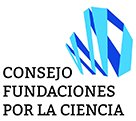Addressing developments in immunotherapy within a multidisciplinary approach was the objective of the Round Table organized by Esteve Foundation Barcelona on April 29th. Attending were eleven experts from different fields and institutions who presented their latest research in this field.
Manel Juan, from the Immunology Department at Hospital Clinic, Barcelona, was in charge of moderating the eleven papers and opening the session with an introduction to biological immunotherapies. After listing more than a few weaknesses of the various immunotherapeutic approaches, such as the variety of specialisation and the high production costs, he went on tooutline the strengths and opportunities in immunotherapy, which could exceed the achievements of conventional pharmacology.
Then it was the turn of Luis Alvarez-Vallina, from the molecular immunology unit at University Hospital Puerta de Hierro, and of monoclonal antibodies, key molecules in the immune system that guard against pathogens. Since solid tumors have proven to be relatively resistant to the action of monoclonal antibodies, new designs have recently been developed that have more ability for multivalent tumor penetration. Álvarez-Vallina reviewed progress in the field of antibody engineering and new therapeutic strategies based on monoclonal antibodies using third generation recombinants.
The next paper, by Africa González-Fernández, from the department of biochemistry, genetics and immunology at the University of Vigo, focused on nanotechnology and its advantages in the field of biomedicine. Although nanostructures have clear benefits and their potential is enormous, offering a wide variety of biological properties and physical-chemical aspects, some very important aspects such as their toxicity and immunogenicity also need to be taken into account.
Cellular immunotherapy was the subject of the talk by Daniel Benitez-Ribas, from the Augstí Pi i Sunyer Institute for Biomedical Research (IDIBAPS), Barcelona. His scientific area of inquiry is focused on translating the results obtained in experimental animal models to human clinical practice. Dendritic cells are highly attractive for therapeutic use in treating tumors and infections. The challenge now is to characterize these tolerogenic cells and describe a protocol for making them compatible with clinical practice.
Antoni Ribas, from the department of medicine at the University of California at Los Angeles, spoke of the various forms of immunotherapy available for cancer, especially metastatic melanoma. He outlined how increased tumor response and its duration can be achieved by the use of combinations of new drugs specific to mutated oncogenes in melanoma, without adverse effects on lymphocyte function. This could be achieved with BRAF specific inhibitors, a combination that will be clinically tested in the near future.
Luis Graça, from the Institute of Molecular Medicine, University of Lisbon, on the other hand, presented an overview of tolerance induction through the use of monoclonal antibodies and how these mechanisms can be used to induce tolerance to allergens. The simultaneous presence of these substances and therapeutic antibodies may allow the immune system to stop responding to these allergens, without ceasing to be immunocompetent.
From allergy we moved onto celiac disease, which was the topic forFrancisco Leon from the U.S. company Centocor, a specialist in the use of antibodies for the treatment of autoimmune diseases. He noted that 50% of celiac patients who follow a gluten-free diet continue to experience symptoms, making it necessary to develop new therapies. In this sense, the field of experimental immunotherapy, although in its infancy, has already given us encouraging signs that some day there will be drug therapies that improve the quality of life of celiac patients.
Michael Sospedra, from the Institute for Neuroimmunology and Clinical MS-Research in Hamburg, made a presentation on immunotherapies in multiple sclerosis. The initial optimism with two new drugs is overshadowed by the appearance of serious side effects. All currently-approved treatments only take effect on the inflammatory component of MS, so they are not effective in treating the neurodegenerative phase of the disease. The goal remains the development of new therapies with anti-inflammatory, and neuroprotective neurogenerators, in addition to securing effective results.
Currently, various strategies of immunotherapy or therapeutic vaccination against HIV are also being explored, which could limit the time, adverse effects and cost of drug treatment. Montserrat Plana, from the IDIBAPS Laboratory of Retrovirology and Viral Pathogenesis, presented the results of several studies conducted to date, which, although modest, are encouraging. However, improving the effectiveness of therapeutic vaccines against HIV requires, among other things, a better understanding of the immune mechanisms of control of viral replication.
Pedro Alonso, from the Centre for International Health Research (CRESIB), has spent years researching a vaccine effective against malaria. His research on this disease, which each year causes about 800,000 deaths, now seems to be beginning to bear fruit: in 2015 it is hoped that a first-generation vaccine against malaria will be launched. These advances would not have been possible without the significant financial contribution of several sponsors, including the Bill and Melinda Gates Foundation and the Spanish government.
Finally, Alberto Sanchez-Fueyo, also from IDIBAPS, closed the day with a talk on pharmacogenomics in liver transplantation. As he said, this is the ideal scenario to consider the possible reduction or withdrawal of immunosuppression in a number of patients. The problem lies in identifying these patients. Hence lifetime treatment with immunosuppressants still reflects the common therapeutic otion for most transplant patients.
The eleven presentations at the Round Table New of Perspectives on Immunotherapy and the discussions that took place after each of the papers among the 25 scientists invited are the subject of theEsteve Foundation Monograph 36.



















